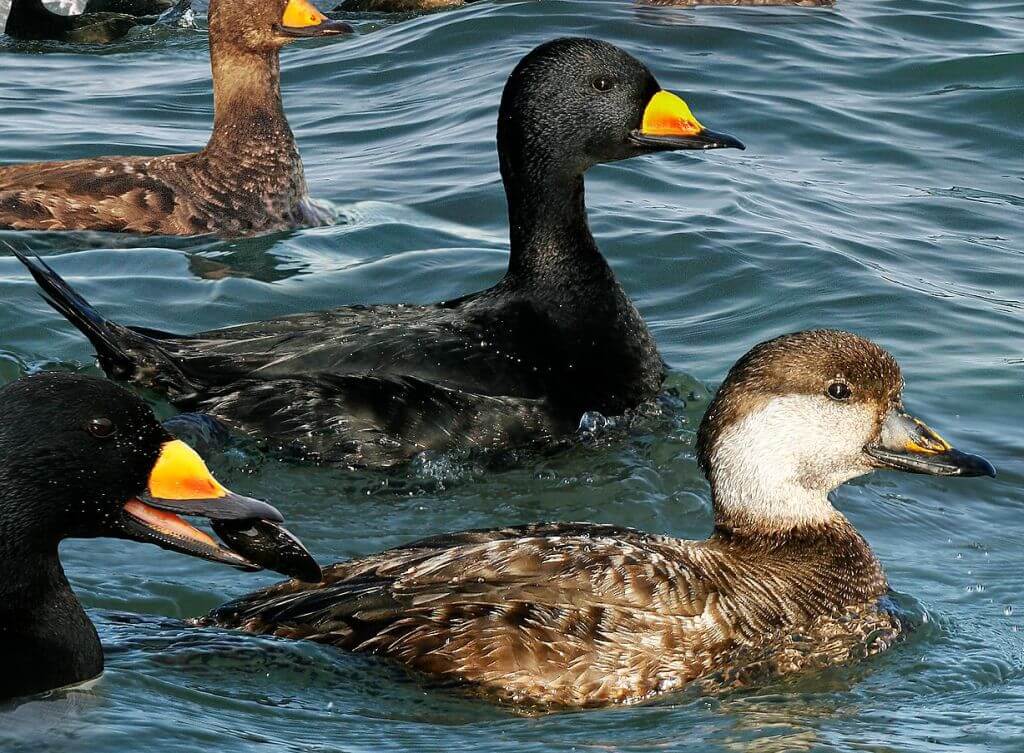Black Scoter

Scientific Name
Melanitta americana
Alternative Names
Black Scoter, American Scoter, Macreuse noire (French)
Measurements
| Measurement | Range | Imperial |
|---|---|---|
| Length | 430–550 mm | 17–21.5 in |
| Weight | 950 g | 2.09 lb |
| Wingspan | 710 mm | 28 in |
| Wing | 213–233 mm | 8.4–9.2 in |
| Tail | 83–97 mm | 3.3–3.8 in |
| Culmen | 42–45.5 mm | 1.65–1.79 in |
| Tarsus | 45–48.5 mm | 1.77–1.91 in |
Status
Near Threatened (IUCN)
Identification
A large sea duck with a heavy build and thick bill. Adult males are completely black with a distinctive swollen yellow-orange bill. Females are brown with pale cheeks, closely resembling female Common Scoters but with more extensive pale areas. Males average 49 cm (19 in) in length and 1,100 g (2.4 lb), while females average 45 cm (18 in) and 980 g (2.16 lb).
Voice
Black Scoters produce distinct calls from those of the Common Scoter. The male’s call is a mellow whistling note, while females give rougher, lower sounds.
Diet
Feeds mainly by diving for crustaceans and molluscs along coastal waters. During nesting, it eats aquatic insects, larvae (especially caddisflies), fish eggs, and occasionally vegetation such as duckweed.
Distribution
Breeds in northern North America—particularly in Labrador, Newfoundland, and around Hudson Bay—and in northeastern Siberia near the Yana River. Winters along the northern U.S. and Canadian coasts, from the Pacific coast south to San Francisco Bay and along the Atlantic and Gulf coasts. In Asia, winters as far south as China. Rare vagrant to western Europe.
Habitat
Prefers northern coastal and inland freshwater habitats during breeding—often near lakes, rivers, or tundra regions. In winter, it favors sheltered bays and coastal waters with mixed depths.
Breeding
Nests later than most North American ducks. Pairs form in late winter or spring. The nest is lined and built on the ground near water in tundra or woodland. Lays 5–7 eggs weighing 60–74 g each (about 8% of the female’s body weight). Incubation lasts 27–31 days. Females brood the young for about three weeks before they become independent.
Conservation
Threatened by habitat loss and pollution affecting breeding and wintering grounds. Monitoring continues due to its Near Threatened status, with conservation attention focused on protecting northern breeding habitats and coastal feeding areas.
